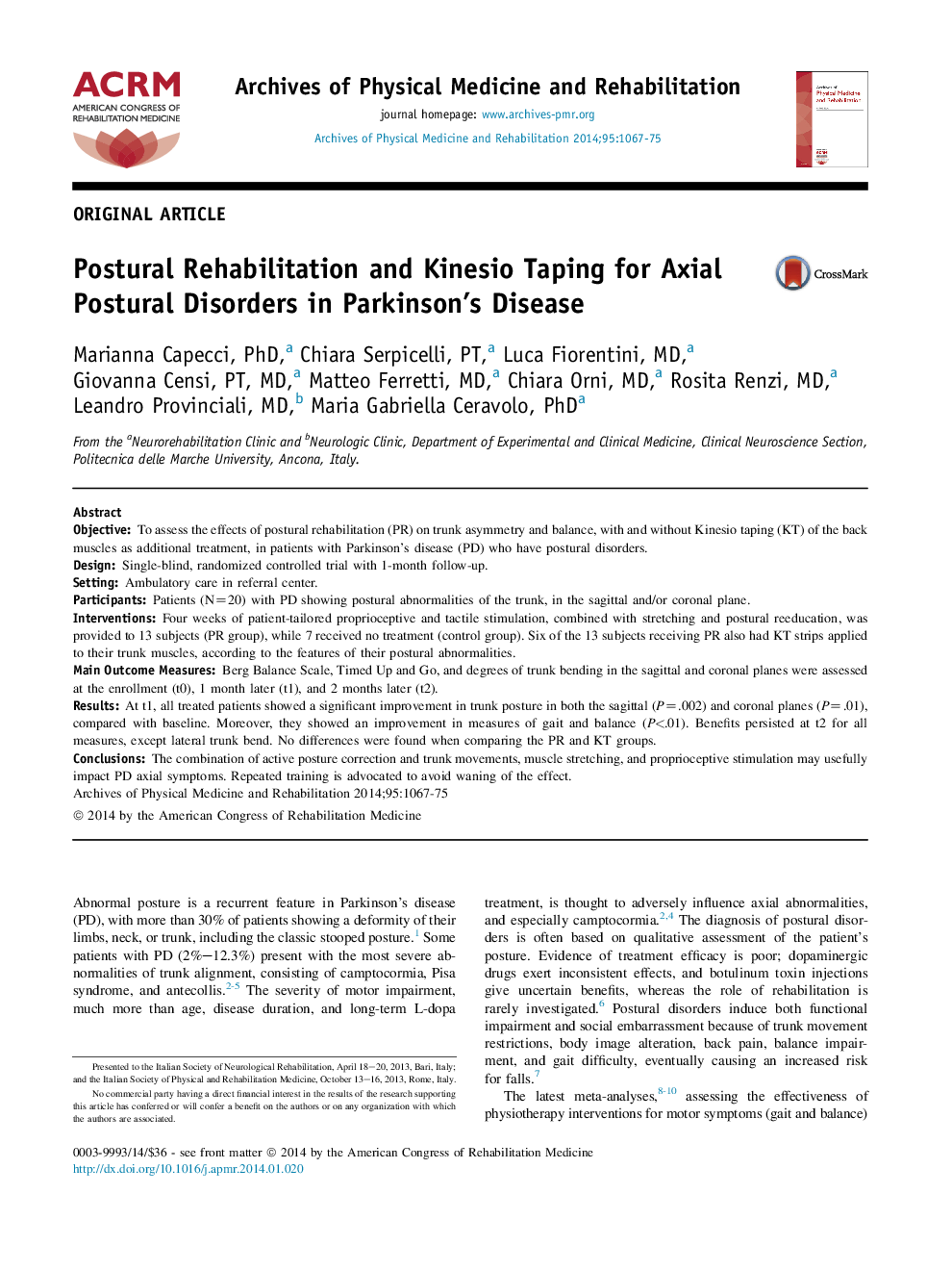| Article ID | Journal | Published Year | Pages | File Type |
|---|---|---|---|---|
| 3448933 | Archives of Physical Medicine and Rehabilitation | 2014 | 9 Pages |
ObjectiveTo assess the effects of postural rehabilitation (PR) on trunk asymmetry and balance, with and without Kinesio taping (KT) of the back muscles as additional treatment, in patients with Parkinson's disease (PD) who have postural disorders.DesignSingle-blind, randomized controlled trial with 1-month follow-up.SettingAmbulatory care in referral center.ParticipantsPatients (N=20) with PD showing postural abnormalities of the trunk, in the sagittal and/or coronal plane.InterventionsFour weeks of patient-tailored proprioceptive and tactile stimulation, combined with stretching and postural reeducation, was provided to 13 subjects (PR group), while 7 received no treatment (control group). Six of the 13 subjects receiving PR also had KT strips applied to their trunk muscles, according to the features of their postural abnormalities.Main Outcome MeasuresBerg Balance Scale, Timed Up and Go, and degrees of trunk bending in the sagittal and coronal planes were assessed at the enrollment (t0), 1 month later (t1), and 2 months later (t2).ResultsAt t1, all treated patients showed a significant improvement in trunk posture in both the sagittal (P=.002) and coronal planes (P=.01), compared with baseline. Moreover, they showed an improvement in measures of gait and balance (P<.01). Benefits persisted at t2 for all measures, except lateral trunk bend. No differences were found when comparing the PR and KT groups.ConclusionsThe combination of active posture correction and trunk movements, muscle stretching, and proprioceptive stimulation may usefully impact PD axial symptoms. Repeated training is advocated to avoid waning of the effect.
